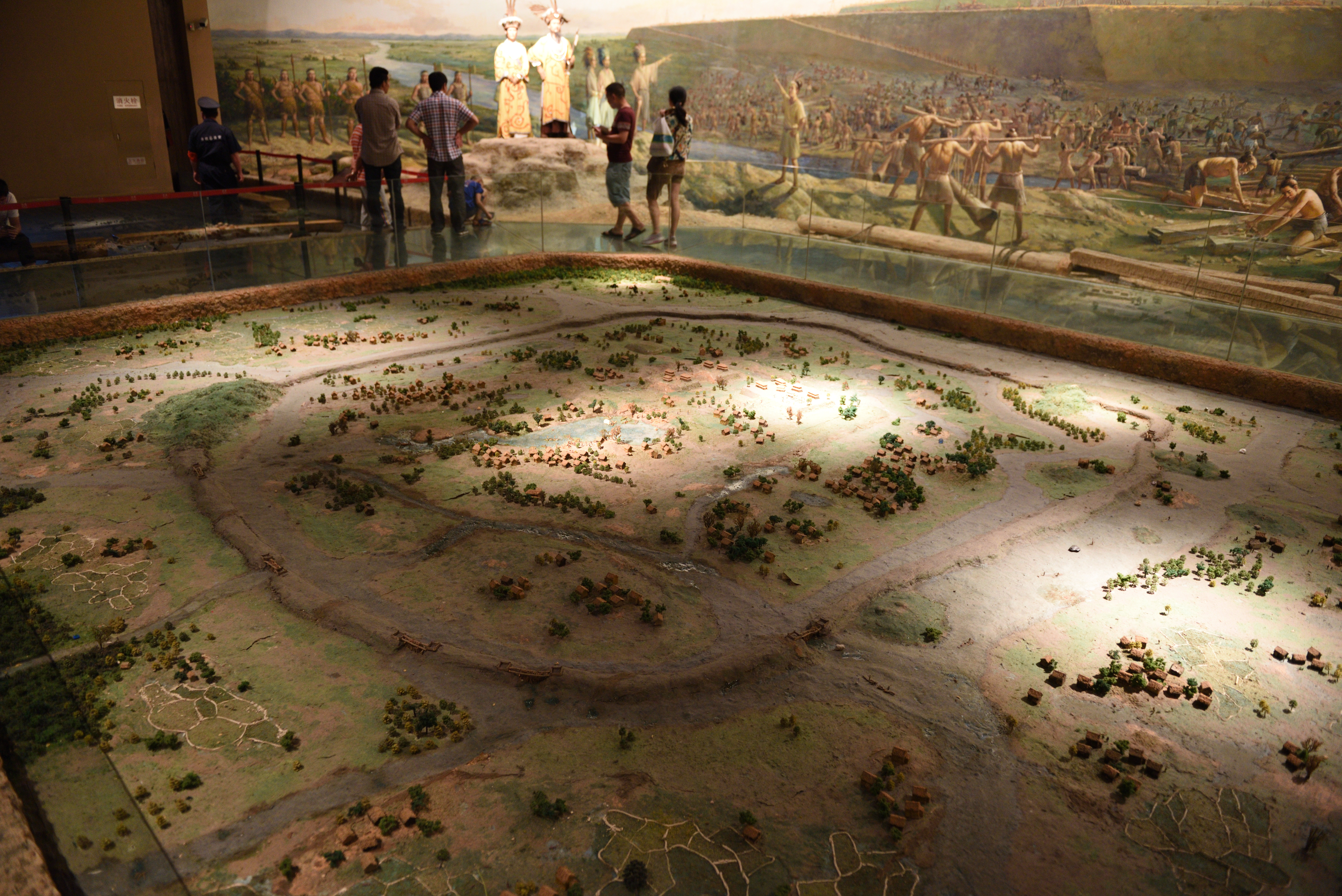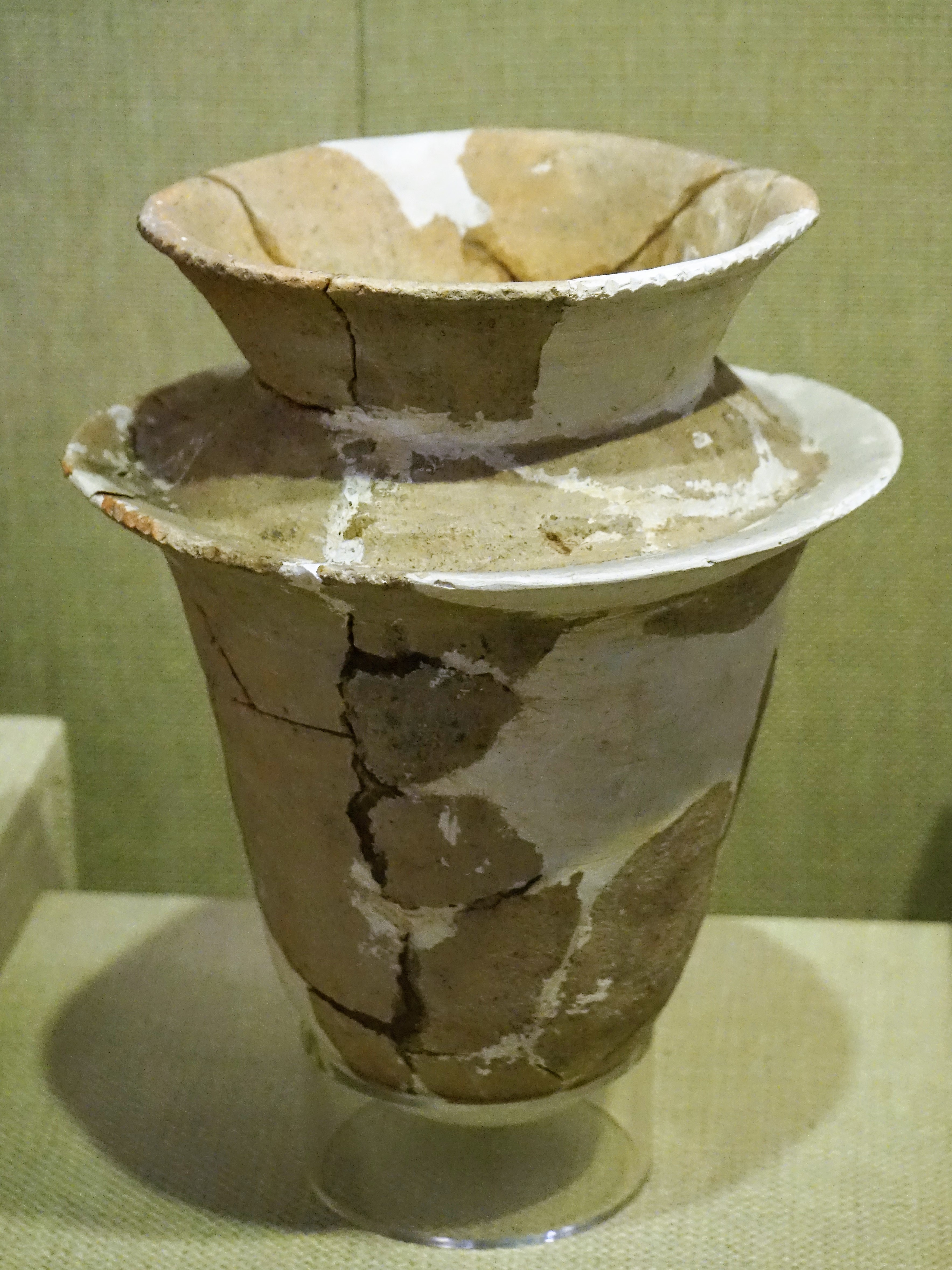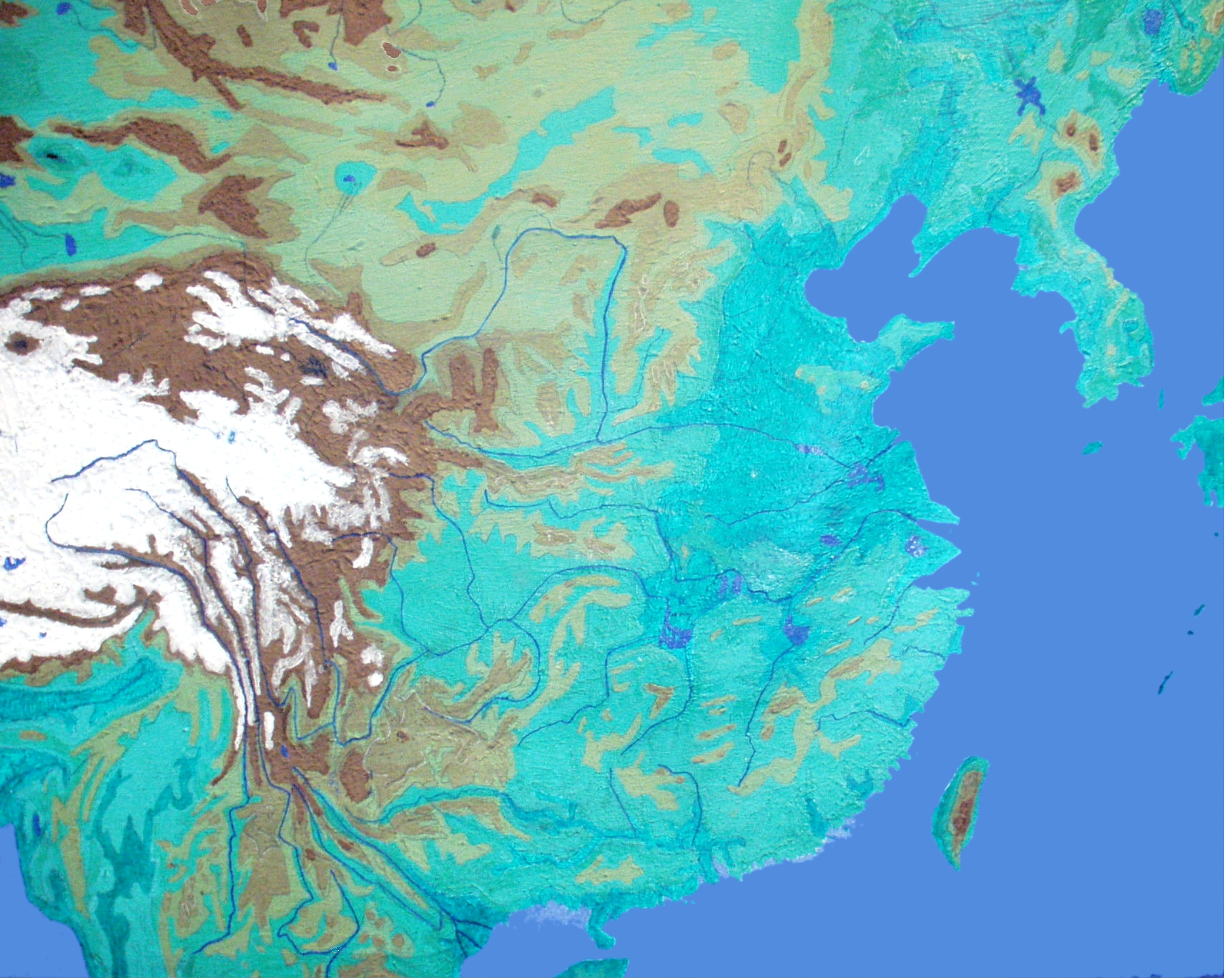|
Songjiang, Shanghai
Songjiang is a suburban district (formerly a county) of Shanghai. It has a land area of and a population of 1,582,398 (2010). Owing to a long history, Songjiang is known as the cultural root of Shanghai. Songjiang Town, the urban center of the district, was formerly the major city in the area. It is now connected to downtown Shanghai by Line 9 of the Shanghai Metro. History The prehistoric coastline of the East China Sea was much farther inland, at Xinzhuang near Songjiang's current eastern border with Minhang District. It was only gradually that silt from the Yangtze River filled in downtown Shanghai about 2000 years ago and then Pudong and Chongming Island over the last 1000 years. Modern archaeology has established a chronology of the main cultural groups who lived in the present area of Songjiang District in Neolithic China: the Majiabang in the 5th millennium ), the Songze in the 4th millennium), and the Liangzhu in the 3rd millennium. The Majiabang were among the fir ... [...More Info...] [...Related Items...] OR: [Wikipedia] [Google] [Baidu] |
District (China)
The term ''district'', in the context of China, is used to refer to several unrelated political divisions in both ancient and modern China. In the modern context, district (), formally city-governed district, city-controlled district, or municipal district (), are subdivisions of a municipality or a prefecture-level city. The rank of a district derives from the rank of its city. Districts of a municipality are prefecture-level; districts of a sub-provincial city are sub-prefecture-level; and districts of a prefecture-level city are county-level. The term was also formerly used to refer to obsolete county-controlled districts (also known as district public office). However, if the word ''district'' is encountered in the context of ancient Chinese history, then it is a translation for '' xian'', another type of administrative division in China. Before the 1980s, cities in China were administrative divisions containing mostly urban, built-up areas, with very little farmla ... [...More Info...] [...Related Items...] OR: [Wikipedia] [Google] [Baidu] |
Songjiang Town
Songjiang (; formerly romanized as Sungkiang) was a large town and the seat of Songjiang County in Shanghai. In 1998, Songjiang County was changed to Songjiang District and, in 2001, Songjiang was abolished to become (). Songjiang is located southwest of Shanghai city proper. The town's Fangta Park has a Song-era square pagoda and nearby a and Ming-era screen wall, decorated with carvings of legendary beasts that depict human failings and misfortunes. It also has the Mazu Cultural Palace, a temple to the Chinese sea-goddess Mazu, a deified medieval Fujianese teenager. The temple was previously located in downtown Shanghai, but its ruins were moved and reassembled for Songjiang's park. West of Songjiang is an old mosque, part of which dates to the Yuan dynasty and is said to be one of the oldest Islamic buildings in China. Even today it is still a place of Muslim worship. Most of the Chinese men fighting in the Ever-Victorious Army against the Taiping Rebellion ... [...More Info...] [...Related Items...] OR: [Wikipedia] [Google] [Baidu] |
History Of Rice Cultivation
The history of rice cultivation is an interdisciplinary subject that studies archaeological and documentary evidence to explain how rice was first domesticated and cultivated by humans, the spread of cultivation to different regions of the planet, and the technological changes that have impacted cultivation over time. The current scientific consensus, based on archaeological and linguistic evidence, is that ''Oryza sativa'' rice was first domesticated in the Yangtze River basin in China 13,500 to 8,200 years ago. From that first cultivation, migration and trade spread rice around the world - first to much of east Asia, and then further abroad, and eventually to the Americas as part of the Columbian exchange. The now less common ''Oryza glaberrima'' rice was independently domesticated in Africa 3,000 to 3,500 years ago. Other wild rice species have also been cultivated in different geographies, such as in the Americas. Since its spread, rice has become a global staple crop impo ... [...More Info...] [...Related Items...] OR: [Wikipedia] [Google] [Baidu] |
Songze Culture
The Songze Culture was a Neolithic culture that existed between 3800 and 3300 BCE in the Lake Tai area near Shanghai. Dates Three radiocarbon dates were taken from Songze culture layers at Jiangli near Lake Tai. Two of the dates were obtained from charred rice grains, returning dates of 3360–3090 BCE and 3540–3370 BCE. The third date was taken from knotgrass and produced a date of 3660–3620 BCE. Although it is accepted to be the successor of the Majiabang culture, others have suggested that Songze was a successor phase to the Hemudu culture. Sites Songze In 1957, archaeologists discovered a site north of Songze Village near Zhaoxiang Town in Shanghai's Qingpu District. Excavations have been conducted throughout 1961, 1974–1976, 1987, 1994–1995, and 2004. These revealed three cultural layers: the most recent had pottery from the Spring and Autumn period; the middle layer was a cemetery with 148 graves and numerous artefacts; the oldest layer belonged to a village of the ... [...More Info...] [...Related Items...] OR: [Wikipedia] [Google] [Baidu] |
Majiabang Culture
The Majiabang culture, also named Ma-chia-pang culture, was a Chinese Neolithic culture that existed at the mouth of the Yangtze River, primarily around Lake Tai near Shanghai and north of Hangzhou Bay. The culture spread throughout southern Jiangsu and northern Zhejiang from around 5000 BC to 3300 BC. The later part of the period is now considered a separate cultural phase, referred to as the Songze culture. After that, It was followed by the Liangzhu culture, and co-existed with the Hemudu culture. Based on the discoveries of the archaeological findings, archaeologists had raised the statement that Majiabang culture is the origin of the early fishing, hunting and gathering economy in China, and its agriculture was developed, especially for the farming of rice, people living in this period used this as an economic method of production. Majiabang people cultivated rice. At Caoxieshan and Chuodun, sites of the Majiabang culture, archaeologists excavated paddy fields, indicating ... [...More Info...] [...Related Items...] OR: [Wikipedia] [Google] [Baidu] |
Archaeology Of China
The archaeology of China is researched intensively in the universities of the region and also attracts considerable international interest on account of the region's civilizations. The application of scientific archaeology to Chinese sites began in 1921, when Johan Gunnar Andersson first excavated the Yangshao Village sites in Henan. He believed that prehistoric Chinese culture had a "Western Origin". In fact, most archaeologists at that time believed that all human civilizations, including Chinese, originated in the broader Middle East and then spread to different regions of the world. This statement caused an uproar in China. Chinese archaeologists hope to find evidence to refute this argument, which has led to a series of Chinese scientific archaeology. Excavations from 1928 at Anyang, also in northern Henan, by the newly formed Academia Sinica by anthropologist Li Ji uncovered a literate civilization identified with the late stages of the Shang dynasty of early Chinese r ... [...More Info...] [...Related Items...] OR: [Wikipedia] [Google] [Baidu] |
Chongming Island
Chongming, formerly known as Chungming, is an alluvial island at the mouth of the Yangtze River in eastern China covering as of 2010. Together with the islands Changxing and Hengsha, it forms Chongming District, the northernmost area of the provincial-level municipality of Shanghai. At the time of the 2010 Chinese census, its population was . A stretch of the north shore of the island is not part of Chongming District of Shanghai but are instead two pene-exclaves of Jiangsu, formed by the connection of Chongming to the formerly-separate island of Yonglongsha. Etymology The island is named for Chongming, an early settlement on the island of Xisha that was named for its placement on relatively high and clear ground. History Present-day Chongming first developed as two separate shoals—Xisha and Dongsha—during the Wude Era (AD 618–626) of the Tang dynasty. These were initially about apart and located south of the larger island of Dongbuzhou ( t , s& ... [...More Info...] [...Related Items...] OR: [Wikipedia] [Google] [Baidu] |
Pudong, Shanghai
Pudong is a district of Shanghai located east of the Huangpu, the river which flows through central Shanghai. The name ''Pudong'' was originally applied to the Huangpu's east bank, directly across from the west bank or Puxi, the historic city center. It now refers to the broader Pudong New Area, a state-level new area which extends all the way to the East China Sea. The traditional area of Pudong is now home to the Lujiazui Finance and Trade Zone and the Shanghai Stock Exchange and many of Shanghai's best-known buildings, such as the Oriental Pearl Tower, the Jin Mao Tower, the Shanghai World Financial Center, and the Shanghai Tower. These modern skyscrapers directly face Puxi's historic Bund, a remnant of former foreign concessions in China. The rest of the new area includes the Port of Shanghai, the Shanghai Expo and Century Park, Zhangjiang Hi-Tech Park, Shanghai Pudong International Airport, the Jiuduansha Wetland Nature Reserve, Nanhui New City, and the Shangh ... [...More Info...] [...Related Items...] OR: [Wikipedia] [Google] [Baidu] |
Yangtze River
The Yangtze or Yangzi ( or ; ) is the longest river in Asia, the third-longest in the world, and the longest in the world to flow entirely within one country. It rises at Jari Hill in the Tanggula Mountains (Tibetan Plateau) and flows in a generally easterly direction to the East China Sea. It is the seventh-largest river by discharge volume in the world. Its drainage basin comprises one-fifth of the land area of China, and is home to nearly one-third of the country's population. The Yangtze has played a major role in the history, culture, and economy of China. For thousands of years, the river has been used for water, irrigation, sanitation, transportation, industry, boundary-marking, and war. The prosperous Yangtze Delta generates as much as 20% of China's GDP. The Three Gorges Dam on the Yangtze is the largest hydro-electric power station in the world that is in use. In mid-2014, the Chinese government announced it was building a multi-tier transport netw ... [...More Info...] [...Related Items...] OR: [Wikipedia] [Google] [Baidu] |
Minhang District
Minhang District is a suburban district of Shanghai with a land area of and population of 2,429,000 residents as of 2010. The original Minhang consist of present-day Jiangchuan Road Subdistrict (Former Minhang Town) and the eastern strip of Wujing along the Huangpu River in 1992, the surrounding Shanghai County merged with Minhang. It is mostly a residential district, though it is also home to some of the many factories and production facilities in Shanghai. Residential housing development is the main source of local government revenue. Qizhong Forest Sports City Arena (旗忠森林体育城) is located in Ma Qiao Town (马桥镇). The Aerospace Museum is being constructed at Pujiang Town. Shanghai Jiao Tong University and East China Normal University both have campuses in the southern part of Minhang District. Administrative divisions Minhang administers 4 subdistricts and 9 towns. Of particular note is Qibao (七宝), a tourist attraction in the northern part of the d ... [...More Info...] [...Related Items...] OR: [Wikipedia] [Google] [Baidu] |
Xinzhuang, Shanghai
Xinzhuang () is a town located in Minhang District, Shanghai, China. The town was, by the early 21st century, essentially walking toward the greater Shanghai urban area. On April 15, 1999, Korean Air Cargo Flight 6316 crashed in Xinzhuang, killing all three people on board along with five more people on the ground. Transport The Xinzhuang Metro Station is located in the east of Xinzhuang, providing access to Metro Line 1 and Line 5, and will provide access to Jinshan Railway in the near future. To the north and south of the station are 2 squares. In the northern square there was a bus terminal providing services to the local Xinzhuang areas (Now is under re-construction because of the Project Tianhui); at the southern square there is a bus terminal connects Xinzhuang with a number of surrounding regional areas. Religion A Three-Self Patriotic Movement The Three-Self Patriotic Movement (TSPM; ) is the official government supervisory organ for Protestantism in the People' ... [...More Info...] [...Related Items...] OR: [Wikipedia] [Google] [Baidu] |
East China Sea
The East China Sea is an arm of the Western Pacific Ocean, located directly offshore from East China. It covers an area of roughly . The sea’s northern extension between mainland China and the Korean Peninsula is the Yellow Sea, separated by an imaginary line between the eastern tip of Qidong at the Yangtze River estuary and the southwestern tip of South Korea's Jeju Island. The East China Sea is bounded in the east and southeast by the middle portion of the first island chain off the eastern Eurasian continental mainland, including the Japanese island of Kyushu and the Ryukyu Islands, and in the south by the island of Taiwan. It connects with the Sea of Japan in the northeast through the Korea Strait, the South China Sea in the southwest via the Taiwan Strait, and the Philippine Sea in the southeast via gaps between the various Ryukyu Islands (e.g. Tokara Strait and Miyako Strait). Most of the East China Sea is shallow, with almost three-fourths of it bei ... [...More Info...] [...Related Items...] OR: [Wikipedia] [Google] [Baidu] |

_-_DSCN8233BB.jpg)



